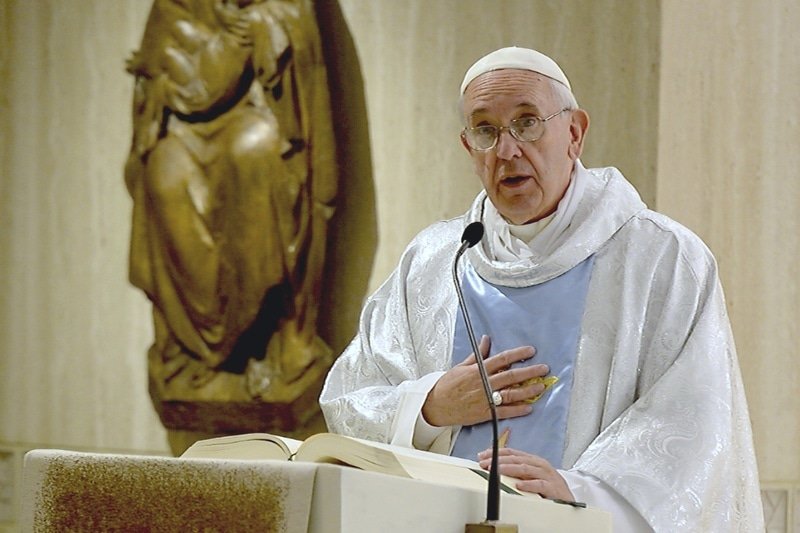Answered by Legionary of Christ Father Edward McNamara, professor of liturgy and dean of theology at the Regina Apostolorum university.
Q: A member of our association has donated a banner with Christ victorious risen from the tomb. This person likes to have a dedication or memorial to her late husband placed on the banner. Is this appropriate? -- G.A., West Vancouver, British Columbia
A: While there is almost nothing official regarding memorials on liturgical objects and church furnishings, there is a long tradition and the exercise of some common sense.
There is a longstanding custom of dedicating a memorial inscription on liturgical objects such as chalices and patens. One of the earliest extant examples is the so-called Tassilo chalice which was presented to the Benedictine monastery at Kremsmünster in the year 777 by the Bavarian Duke Tassilo and his wife Luitpirga. Another example is the 10th-century Bedia chalice offered by a Georgian queen. The inscription, written in an ancient Georgian script, says, "Holy Mother of God, ask your son to have mercy on Bagrat, the King of Abkhazia, and his mother, the Queen Gurandukht, who donated this chalice. Amen."
This inscription, minus the royal titles, is fairly typical of such texts over the centuries indicating the names of the donors and requesting prayers.
Other church furnishings that often receive such inscriptions are stained glass windows and church pews. It is common for such furnishings to have a plaque made of brass or another durable material that says something like "To the glory of God and in loving memory of N. given by his children." Other versions are simpler, asking only for prayers for a person or a family while leaving out the names of the donors. Other benefactors simply request, "Please pray for the donor," trusting the rest to God. Occasionally they are more elaborate, but Roman Catholic custom tends toward brevity in this kind of memorial.
In stained glass windows the memorial dedication is normally in a discreet part of the window pane that does not distract from the primarily religious message of the person or episode depicted.
Memorials placed on objects made of cloth are less common, probably because the idea behind such memorials is that they endure over time, and objects of cloth, even fine banners, tend to wear out fairly quickly with use. They are not unknown, however. London's Anglican Westminster Abbey, for example, has several highly elaborate processional banners that have memorial dedications and which have lasted over a century. I suppose that there are, but have no direct knowledge of, examples of similarly dedicated Catholic processional banners.
In conclusion, therefore, while such memorials are probably not so common on cloth, I do not believe that there is anything inherently inappropriate in placing a discreet memorial upon a banner if the donor wishes to do so.
* * *
Readers may send questions to zenit.liturgy@gmail.com. Please put the word "Liturgy" in the subject field. The text should include your initials, your city and your state, province or country. Father McNamara can only answer a small selection of the great number of questions that arrive.




